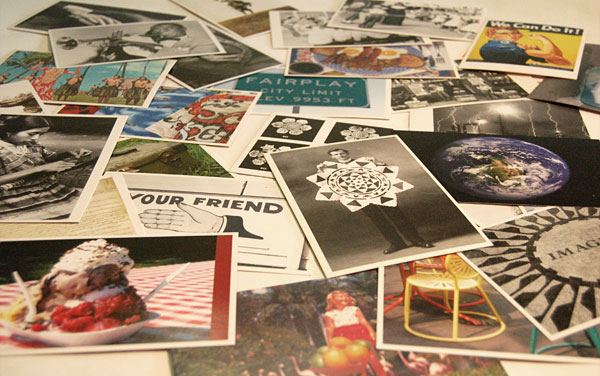
Mar 12, 2011 Start Off With Style. Find a Hook!
“The beginning is the most important part of the work”.
-Plato
Starting Off with Style:
The events or activities experienced the first time learners are exposed to information greatly impact their ability to retain the information. John Medina (2008), author of Brain Rules states: “If you are trying to get information across to someone your ability to create a compelling introduction may be the most important single factor in the later success of your mission” (p.116).
The first few minutes of an experience or lesson are a key time to hook and engage learners. Evidence shows that people remember most about the first few minutes of a learning experience, and secondly, the last few minutes of a learning experience. (Sousa, 2006, Willis, 2010). Some educators and cognitive neuroscientists call this the primacy-recency effect (Sousa, 2006).
I have found this research exciting because it validates a practice I have embraced in my own teaching and group facilitation: offering an engaging opening activity and providing some reflective prompt to “tie it all together” or “bookend” a learning experience. This suggests it also might make sense to create as many introductory and closing moments as possible in your teaching and group facilitation approach.
Find a hook!
Engage participants from the moment they walk in the door. Avoid using these precious moments in taking attendance, collecting homework or other administrative duties. Instead involve learners in an activity that helps them transition into the learning environment, make positive connections with their peers and introduce or review the academic or program material at hand. A novel activity engages learners right away and helps them shift their focus to the here and now.
In this article and in upcoming posts I will share a few of my favorite ways to “hook” learners as they enter the room:Using pictures from magazines, postcards, or other images can be an engaging way to draw in participants. I often use my Pick-A-Postcard collection as a “get to know you” activity on the very first day of a program or school year, as a way to welcome students and teachers back after school vacations, or clients back after a break between sessions.
For an introductory rapport building activity I lay out a collection of postcards or image cards on a table. As participants walk in the door I ask them to choose a card around a reflective, goal-setting, or “conversation starter” topic. Topics might be: a card that represents what their summer break was like, or a card that represents a goal they have for the program or unique perspective they bring to the group.
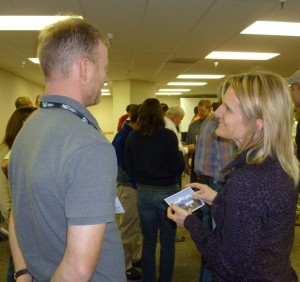 Mid-way through a program I often lay out my postcards during a break or before a session. I ask participants to choose a card they would send to a friend to describe the training, conference experience, or in classroom settings to describe their school year so far.
Mid-way through a program I often lay out my postcards during a break or before a session. I ask participants to choose a card they would send to a friend to describe the training, conference experience, or in classroom settings to describe their school year so far.
This technique is not only useful for building community and initiating reflection, it also is an effective way to reinforce or review academic material. For example, a language arts teacher who is looking to introduce or reinforce the idea of theme might offer a selection of postcards and ask students to choose a card they are drawn to. They would then ask students to identify their interpretation of the card’s theme.
A social studies or science teacher might gather images that center around a specific topic they will be covering in class. They would display the images on a table or floor. As students enter the room they would be asked to choose an image that “sparks their interest” or represents something they know or care about. This could jumpstart discussions or initiate inquiry about the topic at hand.
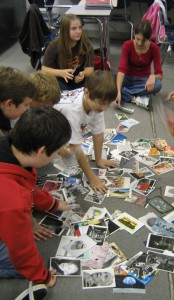 Depending on your group, you could then have participants share their choice with a partner, write about their choice, or share with the entire group. You can attend to the business of taking attendance, handing out materials or collecting homework while participants are engaged in choosing and discussing their card.
Depending on your group, you could then have participants share their choice with a partner, write about their choice, or share with the entire group. You can attend to the business of taking attendance, handing out materials or collecting homework while participants are engaged in choosing and discussing their card.
Regardless of the educational setting you work in, there is great opportunity for positively influencing learning outcomes with participants through strong beginnings. The tone we set in the learning space, and the frame and context we set for a lesson can greatly impact participant engagement and retention of information.
Look for more ideas for creating a “hook” to engage participants in upcoming posts!
References:
Medina, John. (2008). Brain Rules: 12 Principles for Surviving and Thriving at Work, Home and School. Seattle, WA: Pear Press.
Sousa, David. (2006). How the Brain Learns. Thousand Oaks, CA: Corwin Press.
Willis, Judy. (2006). Research-Based Strategies to Ignite Student Learning. Alexandria, VA: ASCD.
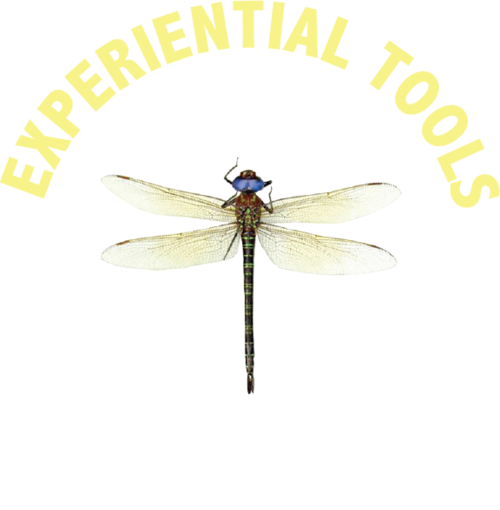


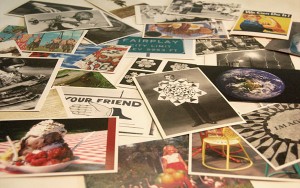
Jen Lara
Posted at 10:23h, 06 AprilJS – This is such a helpful post, as is the other post on using quotes. Would it be OK if I link to them from my blog next week or the week after?